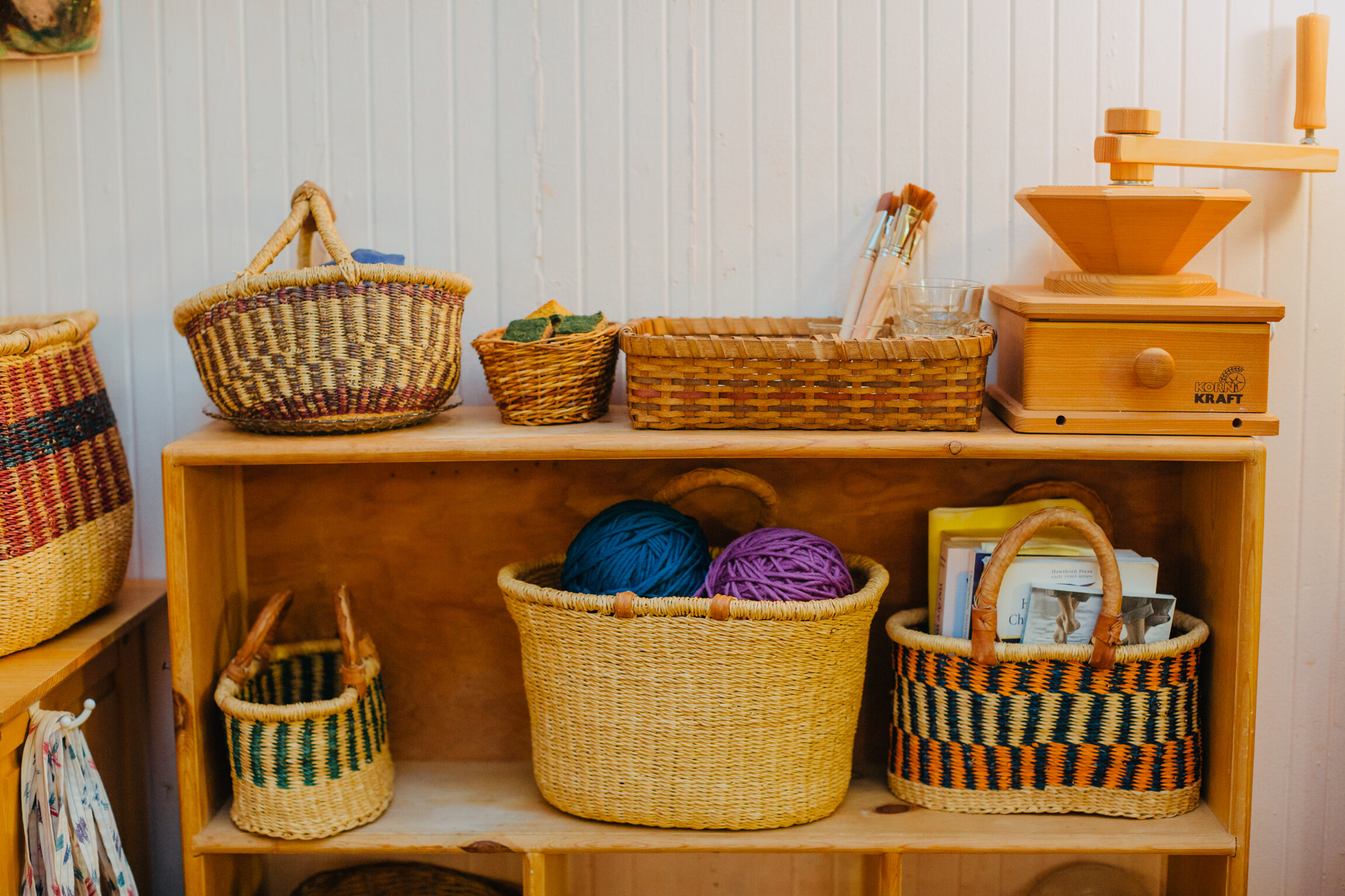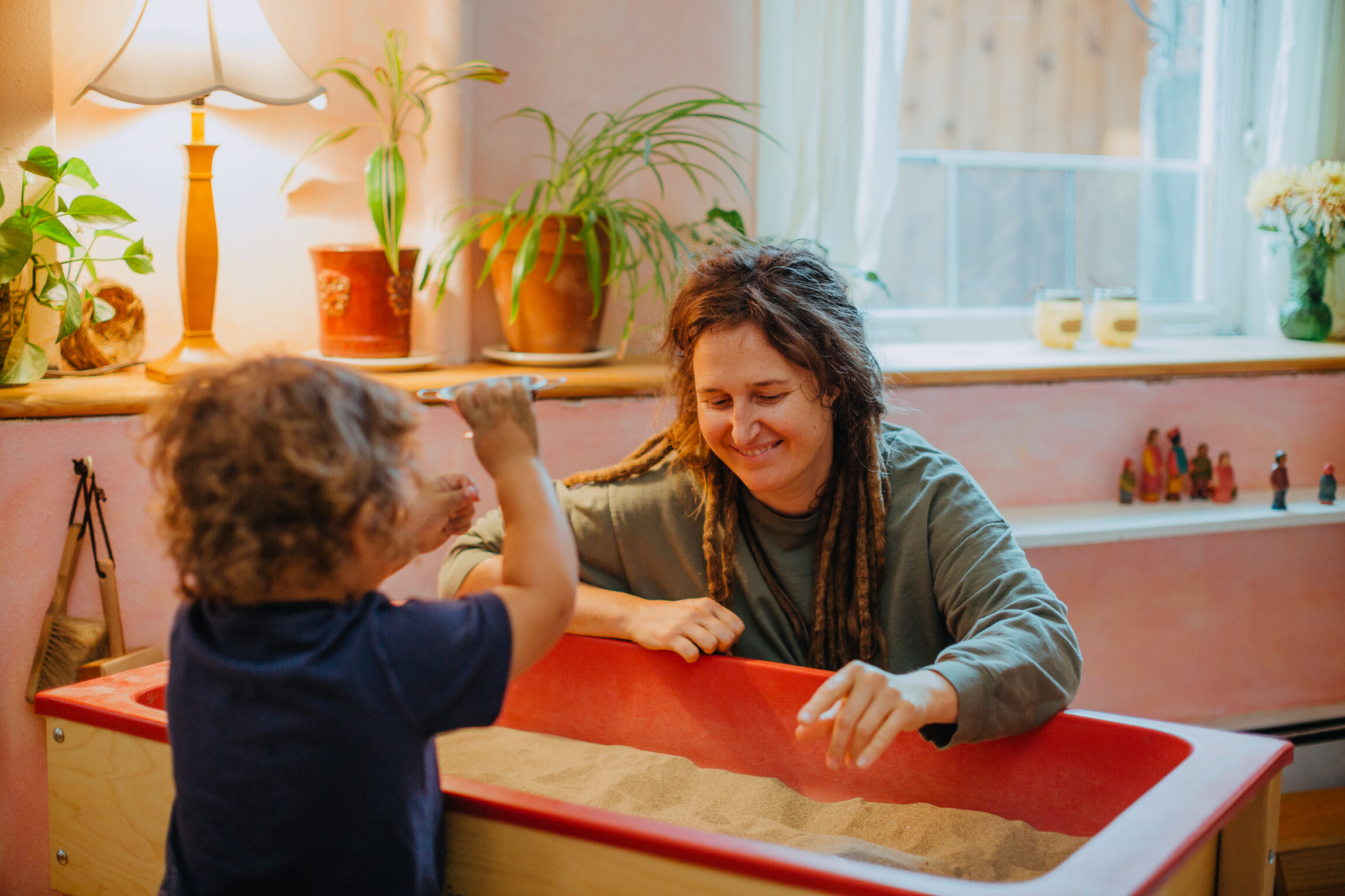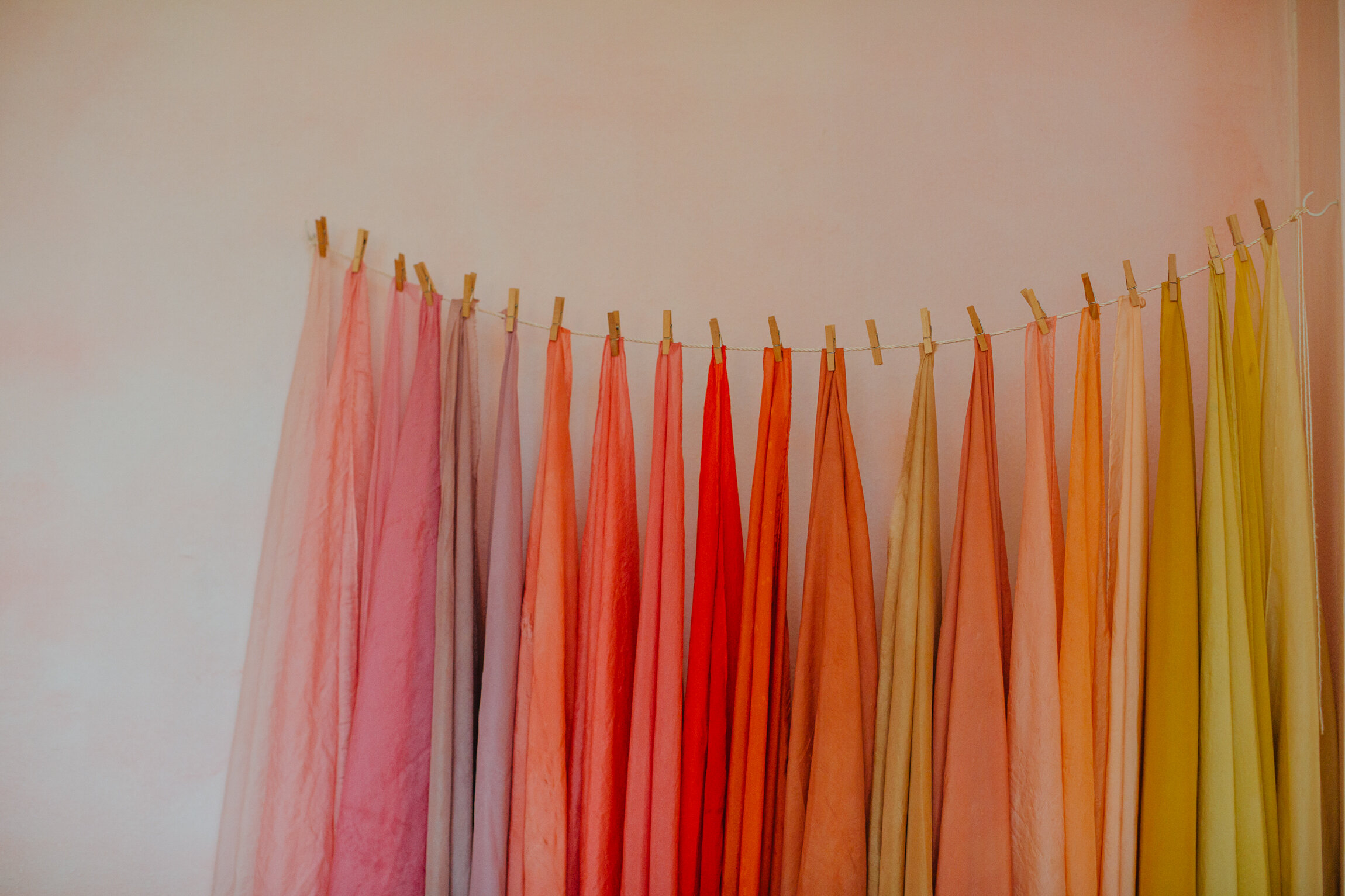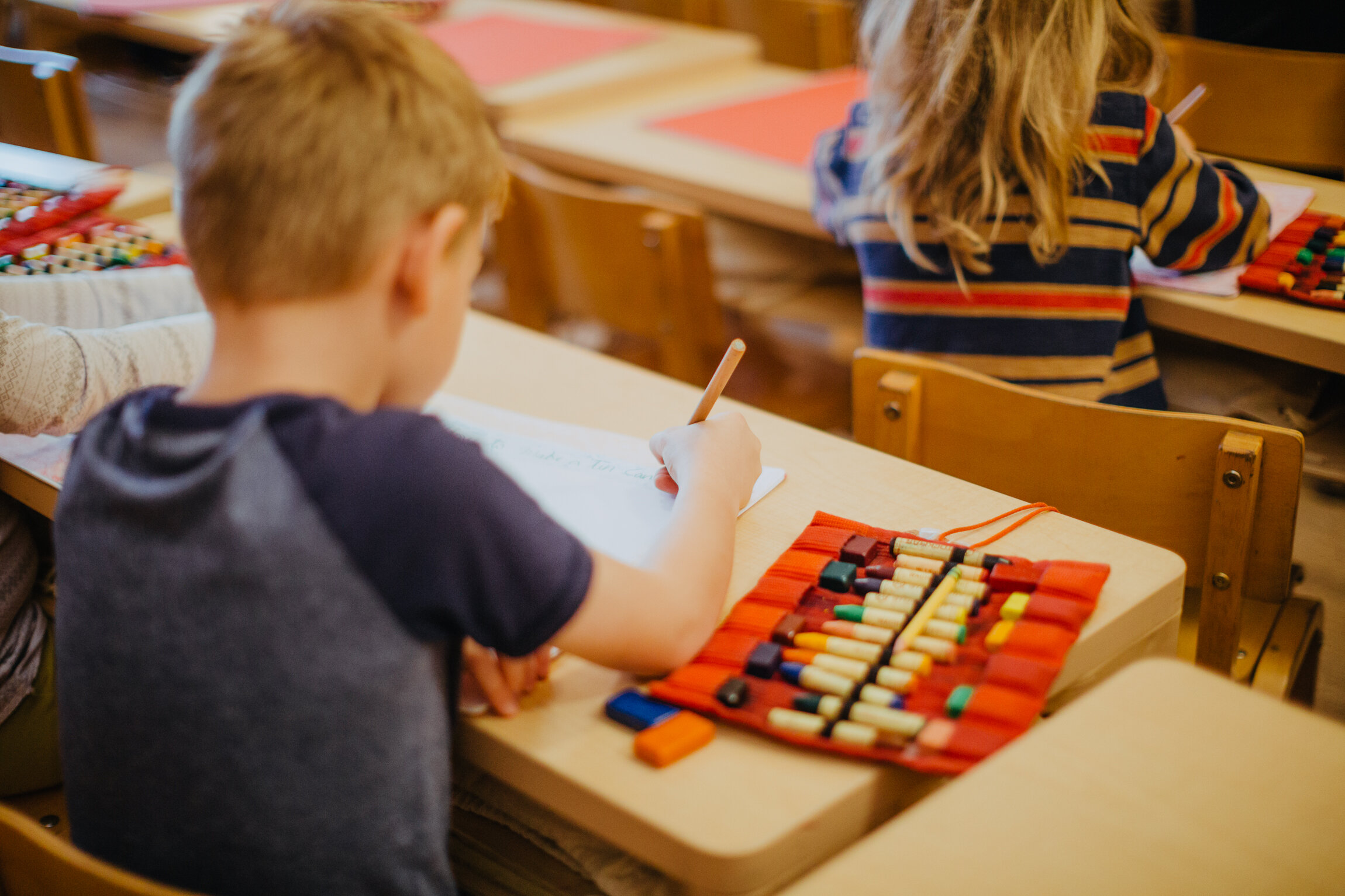Why We Use Natural Materials
When we use natural materials, children are held by nature. Nature carries order, harmony, laws, and consequences. Nature is life-giving.
Gifts from nature contain life-stories within. Wood reveals through its grain the milestones of growth and development of a tree. A round stone tells us of its long, long biographical journey. Silk is developed through the persistent work of silkworms. Shells carry a memory of life in the ocean.
We share our lives with nature, as we are part of it.
By contrast, there are so many things around us that contain no life.
Synthetic materials, plastic toys, electronic devices, media images, etc. Although they make look “real” and can be convenient and entertaining, they do not contain the beautiful quality of life that is inherent in objects made of natural materials.
Natural materials like the ones you see in our Early Childhood spaces and grade school classrooms develop a sense of life in young children. Whenever possible, our teachers choose toys and furnishings made of wood, cotton, silk, and wool to create warm and nourishing environments for our littlest friends.
There’s a reason that one of the most frequent remarks we hear from parents visiting the Early Childhood classrooms for the first time is “I wish I could have gone to school here!”
These spaces are designed to make us feel safe, as though we can fully relax into the cozy cocoon of our surroundings. And when we are completely at ease, our sense of life — and of health and wellbeing — is free to develop.
Children who develop this sense of life will become able to distinguish health from illness, essential from inessential, reality from caricature, and truth from untruth in their later years in life. They will be able to understand natural laws and cosmic order as their thinking capacity develops.
And, ideally, they will develop a capacity to bring healing and harmony to our planet, which so greatly needs it.
How can you incorporate natural materials at home?
In small and incremental steps, you can swap out synthetic materials at home to create a warm and supportive home environment for your family!
Instead of plastic toys in the bath, what about shells? Could a foam play mat be exchanged for a soft lambskin? Could a cloth doll be chosen instead of a more rigid one?
It’s important to note — especially for those who may feel overwhelmed by the cost of natural toys and materials when compared to cheaper alternatives — that less is truly more! Go for a simple set of wooden blocks rather than the intricately designed kitchen set; the blocks can take on many imaginative forms, while the kitchen may serve more limited play.
Whenever possible, choose toys that can be brought to life by your child’s imagination, and furnishings and clothing that are sturdy and can be mended and cared for over a long lifecycle.
Simplicity Parenting, by Kim John Payne, is an excellent resource for those interested in creating a more simple and natural home environment!
Chiaki Uchiyama is Cedarwood’s Pedagogical Director, and teaches the Japanese language program to our middle school students. Born and raised in Yokohama, Japan, Uchiyama Sensei moved to the United States in 1997 and taught Japanese language at Cedarwood for 20 years before becoming the Pedagogical Director in 2018. Although she misses the fun of teaching Japanese language to the children, she finds infinite satisfaction and fulfillment in supporting our students, teachers, administration, parents, and the whole school community.
Chelsea Slaven-Davis spent much of the early years with her two children exploring how to make their home environment warm, nurturing and engaging on a tight budget and through several moves across the country. From tiny city apartments to cozy houses with big yards, Chelsea’s family has made home “home” in New York City, Spokane, and now Portland, where she works as Cedarwood’s Marketing & Communications Director.







